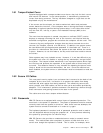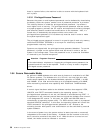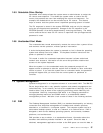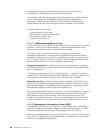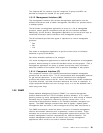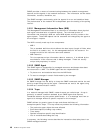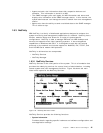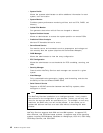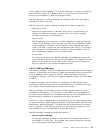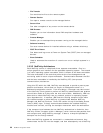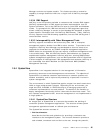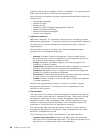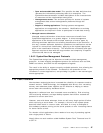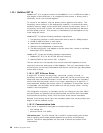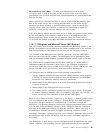It also supports Novell NetWare. This means that there is a version of NetFinity
Services which installs as a NetWare NLM on the file server and allows the
server to be managed by a NetFinity Manager station.
NetFinity Services can also be installed on a Windows NT server and used to
manage this platform as well.
NetFinity Services can be configured in three client modes of operation:
•
Stand-alone client
Stand-alone mode allows an individual user, who is not connected to a
network, to effectively manage or monitor their own system including
hardware, resources and performance.
•
Passive client
With the passive client installed on a LAN workstation, a NetFinity Manager
is able to fully manage and monitor the resources and configuration setting
of the workstation. However, with the passive mode installed, that same
client is not able to perform its own management task locally. This mode is
most effective for LAN administrators who do not want individual users to
have management capability on an individual basis.
•
Active client
The active client allows the NetFinity Manager to manage and monitor the
resources and configuration setting of the workstation. In comparison to the
passive client mode, the active client mode allows local users to perform
their own subset of local system management tasks.
1.9.3.2 NetFinity Manager
The NetFinity Manager is the set of applications that is installed on the managing
platform. It automates the collection of data from managed clients and archives
it into a database, which maintains specific, unique workstation data and
configuration settings. NetFinity also supports database exports into Lotus Notes
or DB2/2.
In addition to logging the information in a database, an administrator may
dynamically monitor performance on client workstations. An administrator may
also identify resource parameters to monitor and maintain.
NetFinity Manager has the ability to discover LAN-attached NetFinity client
workstations automatically. For example, if a new NetFinity client appears on
the LAN, it will be sensed by the manager services and, from that point on, will
be automatically included as a managed device within the profile.
A profile is a set of managed devices grouped by a set of unique attributes such
as system processor types, operating systems, installed transport protocols, and
administrator defined keywords. The keywords can be descriptors of systems,
users or profiles. These NetFinity profiles can be dynamically declared, reset
and maintained on an
as needed
basis by the administrator.
NetFinity Manager includes the following functions:
•
Remote Systems Manager
This allows managers to access remote NetFinity-managed machines on a
LAN, WAN, or a serial link. The manager can access the NetFinity services
as if the manager was at that machine.
Chapter 1. IBM PC Server Technologies 43



